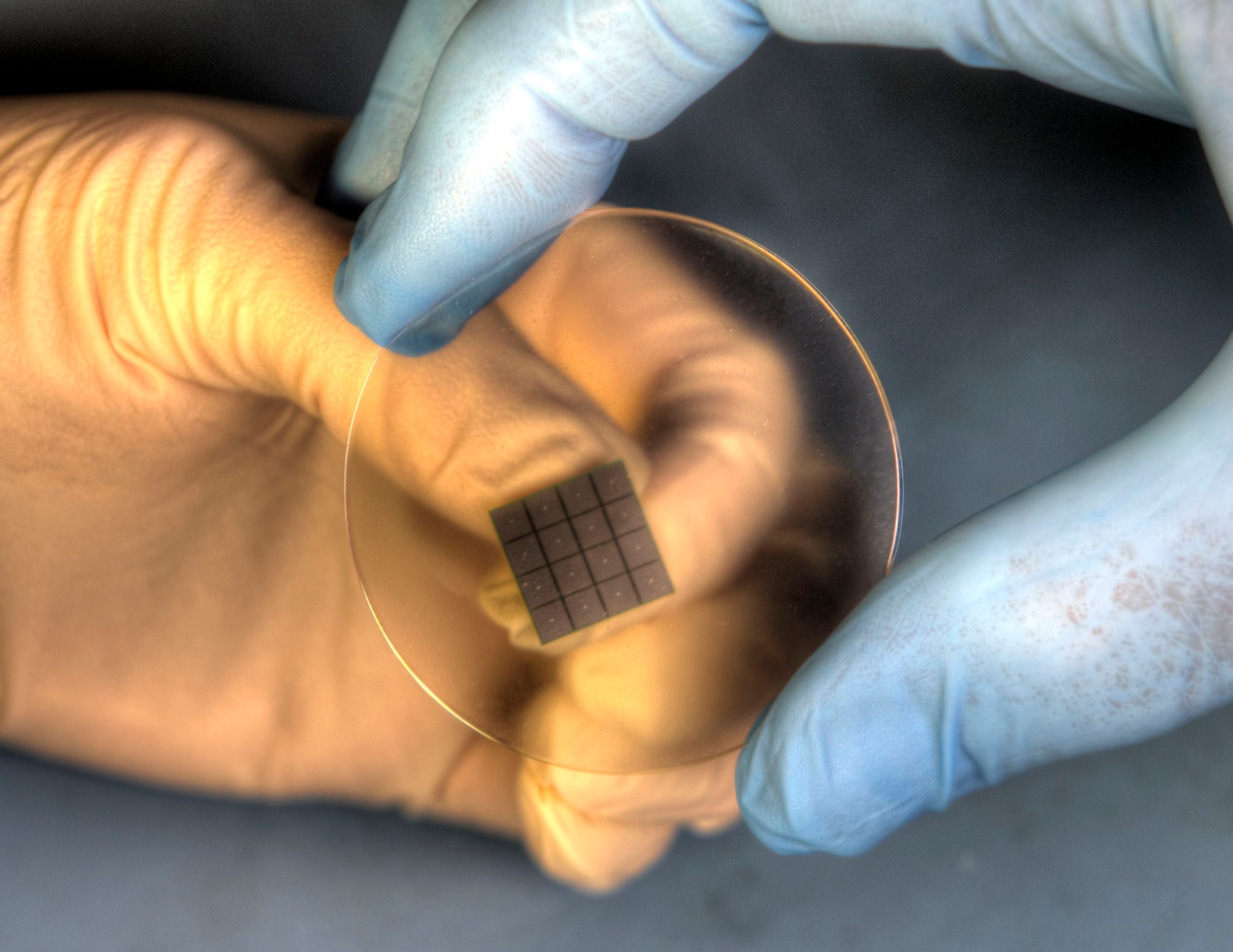An exotic material poised to become the semiconductor of choice for power electronics —- because it is far more efficient than silicon — is now being eyed for potential applications in space.
Two NASA teams are examining the use of gallium nitride, a crystal-type semiconductor compound first discovered in the 1980s, and currently used in consumer electronics such as laser diodes in DVD readers. Among its many attributes, gallium nitride — GaN, for short — demonstrates less electrical resistance and thus loses only a small proportion of power as heat. The material can handle 10 times the electrical current of silicon, enabling smaller, faster, and more efficient devices. In addition, it’s tolerant to a wide range of temperatures, resistant to radiation, and as it turns out, adept at detecting energetic particles.
It’s no wonder then that scientists and engineers at NASA’s Goddard Space Flight Center in Greenbelt, Maryland, are interested in seeing how they could tap into this versatile material to enhance space exploration.
With their funding, engineer Jean-Marie Lauenstein and scientist Elizabeth MacDonald are investigating Gallium-Nitride High Electron Mobility Transistors, or GaN HEMTs, for use in studying how Earth’s magnetosphere couples to its ionosphere — a key question in the field of heliophysics, which among other things studies the forces that drive change in our space environment. Stanley Hunter and Georgia de Nolfo, meanwhile, are investigating the material’s use on a solid-state neutron detector that is relevant to both science and homeland security.
Gallium-Nitride Transistors
Gallium-nitride transistors or semiconductors became available commercially in 2010, but they have not yet found their way into space scientists’ instruments, despite their potential to reduce an instrument’s size, weight, and power consumption. There’s a reason for that, said Lauenstein. Even though gallium-nitride is predicted to be resistant to many types of radiation damage encountered in space, neither NASA nor the U.S. military has established standards characterizing the performance of these transistor-enabled devices when exposed to the extreme radiation in space.
When struck by galactic cosmic rays or other energetic particles, electronic equipment can experience catastrophic or transient single-event upsets. “We have standards for silicon,” Lauenstein said. “We don’t know if the methods for silicon transistors would apply to gallium-nitride transistors. With silicon, we can assess the threshold for failure.”
With the funding, Lauenstein and MacDonald are teaming with the Los Alamos National Laboratory in New Mexico, a parts manufacturer, and the NASA Electronic Parts and Packaging to establish criteria assuring a GaNs-type device could withstand the effects of potentially harmful particles produced by galactic cosmic rays and other sources.
The material could be useful in electron-beam accelerators — comprised of gallium-nitride transistors — built to map specific magnetic lines in Earth’s protective magnetosphere to their footprints in Earth’s ionosphere where aurora occur — helping to show how the two regions of near-Earth space connect.
“The team’s research on radiation tolerance helps us understand how to fly these accelerators in the harsh space environment over the mission’s lifetime,” MacDonald said.
According to Lauenstein, these standards will also benefit other scientific disciplines. “We need a path forward for this technology,” she said “This opens the door for others to incorporate this technology into their own missions.”
Potentially “Game Changing”
For de Nolfo and Hunter, gallium-nitride offers a potential solution for building a detector and imaging neutrons, which are short-lived and typically expire after about 15 minutes. Neutrons can be generated by energetic events in the Sun as well as cosmic ray interactions with Earth’s upper atmosphere. The neutrons generated by cosmic rays in the atmosphere can add to Earth’s radiation belt — a swatch of radiation surrounding Earth that among other things can interfere with onboard satellite electronics — when they decay. Researchers have discovered GaN can form the basis of a highly sensitive neutron detector.
“The gallium-nitride crystal could be game-changing for us,” de Nolfo said.
Under their concept, Hunter and de Nolfo would position a gallium-nitride crystal inside an instrument. As neutrons entered the crystal, they scatter off gallium and nitrogen atoms and, in the process, excite other atoms, which then produce a flash of light revealing the position of the neutron that initiated the reaction. Silicon photomultipliers attached to the crystal convert the flash of light into an electrical pulse to be analyzed by the sensor electronics.
“Gallium-nitride is reasonably well understood in the photo-electronics industry, but I think we’re pushing the envelope a little on this application,” Hunter said, adding that the beauty of the concept is that it would contain no moving parts, use little power, and operate in a vacuum. If it works, the instrument would benefit different space science disciplines and the military in detecting nuclear material, he added.
For more Goddard technology news, go to: https://nasa-gov-preprod.
go-vip.net/wp-content/uploads/2018/08/summer_2018_final_web_version.pdf
By Lori Keesey
NASA’s Goddard Space Flight Center



























